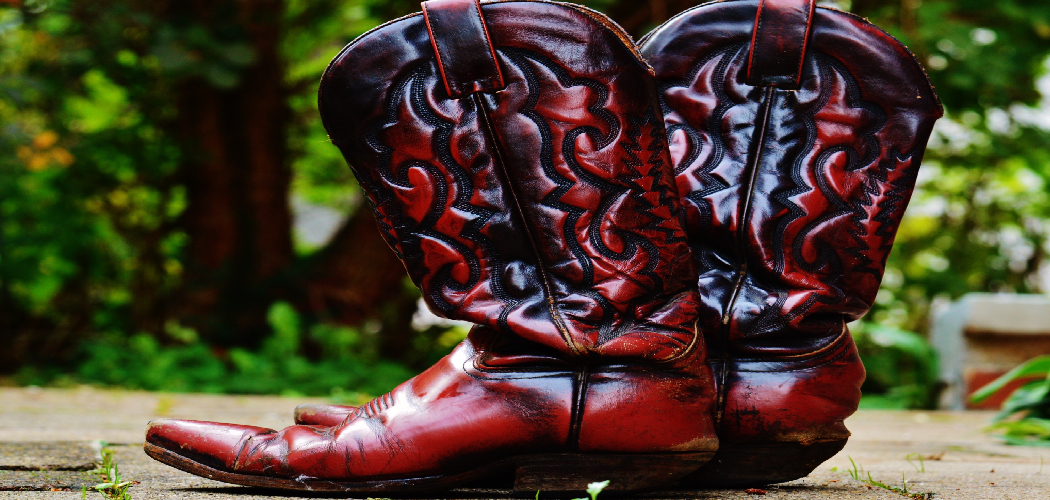Breaking in stiff leather boots can be a challenging process, but it’s essential to ensure that your boots fit comfortably and provide the support you need. New leather boots can be stiff and uncomfortable, causing blisters and discomfort if worn for long periods without proper break-in.
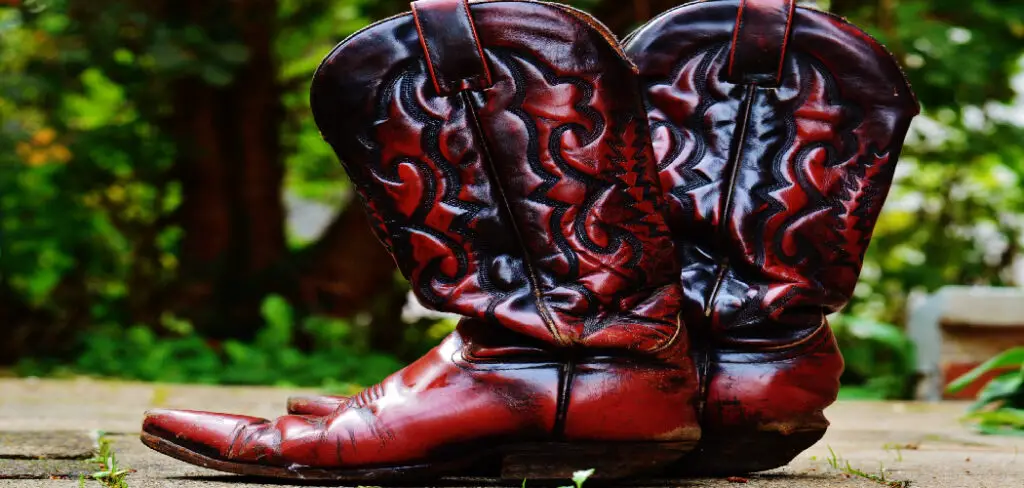
However, with the right techniques and patience, you can soften the leather, stretch it to conform to your feet, and make your boots more comfortable to wear. In this article, we will discuss various methods on how to break in stiff leather boots, including using heat, moisture, and stretching techniques, as well as proper boot care to maintain the integrity of the leather.
With these tips, you can successfully break in your stiff leather boots and enjoy a comfortable fit for years to come.
What’s the Fastest Way to Break in Leather Boots?
One of the fastest ways to break in a new pair of stiff leather boots is to use a boot softener. Boot softeners are designed to soften tough leather, making it easier to break in and wear. To apply the softener, make sure your boots are clean and dry, then apply an even layer of softener all over the boots. You can use a soft cloth or brush to apply the softener smoothly and evenly. After you’ve applied it, let the boots sit for at least 10 minutes before wiping off any excess with another clean, dry cloth.
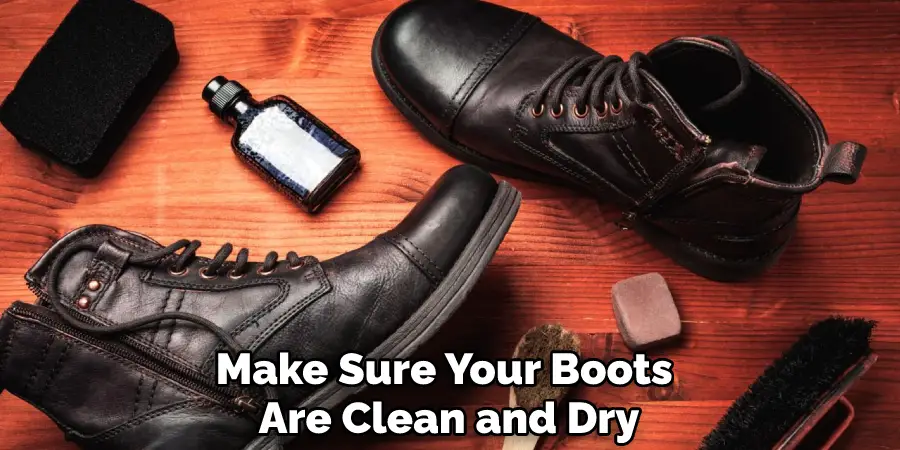
Another method for breaking in leather boots is to wear them regularly around your home or on short walks outside. This helps ‘wear down’ the leather naturally and allows it to conform to your feet more quickly. The added bonus of this method is that you get some good exercise too!
Finally, if neither of the above methods works for you, consider investing in a pair of boot stretchers or shoe trees to help break in the leather. Boot stretchers are designed to fit into the boots and can help stretch them out over time. Shoe trees, on the other hand, are inserted into the boots when they’re not being worn to help keep their shape and prevent creasing.
Whichever method you choose to break in your leather boots, it’s important to remember that patience is key – breaking in a new pair of boots may take some time! With the right care and attention, however, you’ll soon be enjoying your perfectly broken-in leather footwear.
Can Beginners Use Stiff Boots?
Stiff leather boots are designed to provide superior support and protection for your feet. However, if you’re a beginner in the world of leather boots, stiff boots may not be the best option for you due to their unyielding nature. Stiff leather boots will require more effort to break in than softer options; this can lead to discomfort or even injury if you aren’t prepared for it. It is recommended that beginners start with an easier type of boot before venturing into the realm of stiff ones.
Although stiff leather boots may be a bit more difficult to break in for beginner wearers, they offer plenty of benefits that often outweigh any initial discomfort. Many people find that once broken in, stiff leather boots provide unsurpassed durability, comfort, and protection. This makes them ideal for people who require tough footwear but don’t want to sacrifice comfort or style.
If you’re a beginner and still want to try out stiff leather boots, there are still some helpful tips that can help with the break-in process. Make sure to research different types of leather boots and their respective break-in times so that you know what to expect and decide on a pair accordingly.
Additionally, use quality waterproofing products before excursions and opt for more plush insoles as opposed to harder ones as your feet will thank you later on. Finally, start off slow by wearing them in short amounts of time until they become more pliable.
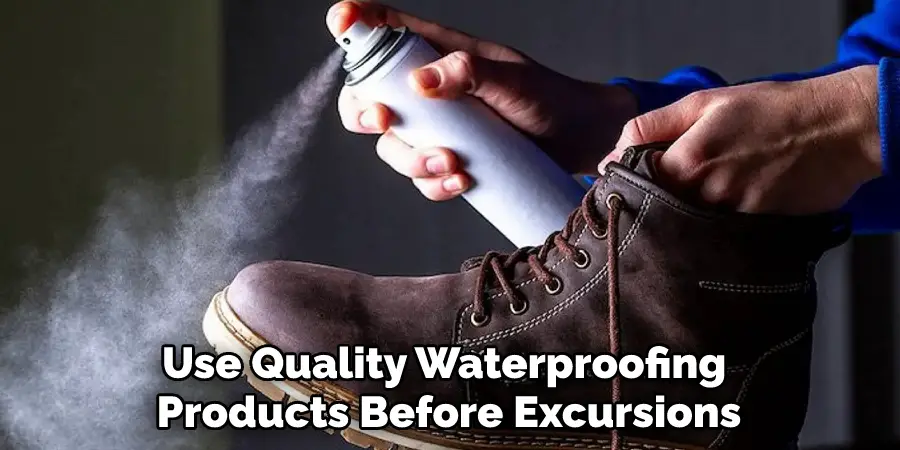
In conclusion, stiff leather boots may be the ideal choice for many people due to their durable and protective nature. However, beginners should consider starting with a softer option before moving onto stiffer boots if they don’t want to risk discomfort or injury during the break-in process.
If you do decide to go ahead with stiff leather boots as a beginner, there are some helpful tips that can make the transition easier on your feet. Ultimately, it is up to you whether or not you believe stiff leather boots are worth the effort of breaking in – just remember that comfort and protection should always come first!
10 Methods How to Break in Stiff Leather Boots
1. Wear Them Around the House:
One of the simplest ways to break in stiff leather boots is to wear them around the house for short periods of time. Start by wearing them for an hour or two each day, gradually increasing the duration as your feet get used to the boots.
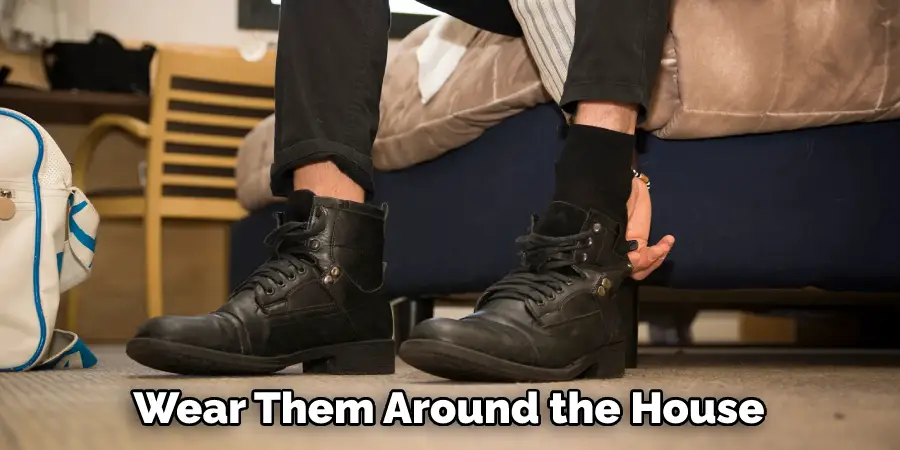
This allows the leather to mold gradually to the shape of your feet without putting too much pressure on them. If the boots are especially tight, you may need to wear them for shorter periods of time and build up to longer durations. Although this method can take a bit of patience, it’s one of the most effective ways to break in stiff leather boots.
2. Use a Leather Conditioner:
Applying a leather conditioner to your boots can help soften the leather and make them more pliable. Choose a high-quality leather conditioner and apply it to the entire surface of the boots, paying extra attention to the stiff areas. Allow the conditioner to penetrate the leather for a few hours or overnight, and then wipe off any excess before wearing the boots.
Use a soft cloth to buff the leather and bring out its natural shine. Leather conditioner should be applied regularly to keep your boots supple, but be sure to test it on a small area first to make sure you don’t damage the leather. While a leather conditioner can help make your boots more comfortable to wear, it may not be enough if they’re really stiff. In that case, you’ll need to try a different approach.
3. Wear Thick Socks:
Thick socks can provide extra cushioning and help stretch the leather of stiff boots. Put on a pair of thick socks and then wear your boots. The socks will help create some extra space inside the boots and allow the leather to stretch and mold to your feet more easily.
Additionally, the socks will help prevent blisters and other issues that can arise from wearing leather boots for long periods of time. Make sure to try on the boots with socks and double-check to make sure the boots still fit comfortably with them on. While you should not try to buy a pair of boots that are too small, thicker socks can help make a size difference more comfortable.
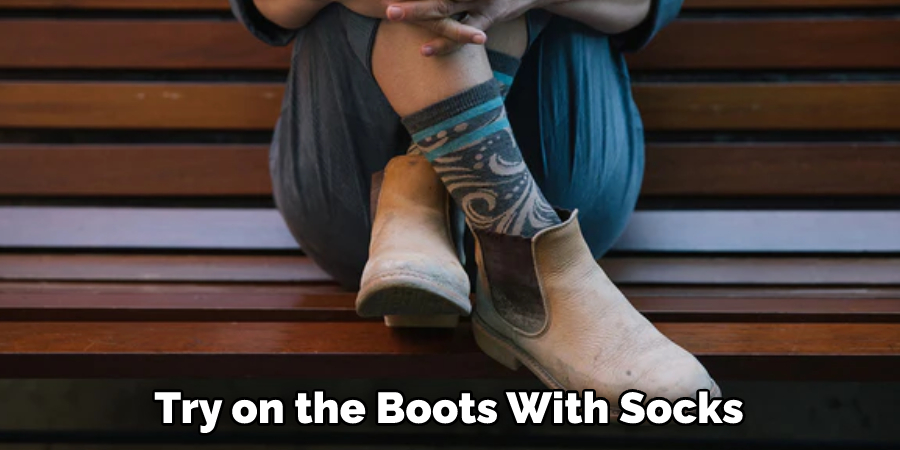
4. Use Heat:
Heat can help soften stiff leather and make it more flexible. You can use a hairdryer or a heat gun to warm up the stiff areas of your boots. Be careful not to overheat the leather, as it can damage it. Once the leather is warmed up, flex the boots and move your feet around to help the leather stretch and conform to the shape of your feet.
You can repeat this process a few times until the leather takes on your shape. To finish, apply leather conditioner or oil to keep the leather soft and supple. This will also help protect it against elements such as water and sun damage. With proper care, your leather boots will last for years.
5. Wear Them with Damp Socks:
Another method to soften stiff leather boots is to wear them with slightly damp socks. Dampen a pair of thin socks with water and wring out any excess moisture. Put on damp socks and then wear your boots. As the socks dry, they will create some moisture inside the boots, which can help soften the leather and make it more pliable.
While this method can help soften the leather, it’s important to remember that moisture can also damage your boots. To prevent any water damage, make sure your boots are completely dry before storing them. You should also avoid wearing your boots in wet conditions, as this can cause the leather to become overly saturated and cause damage.
6. Use a Leather Stretcher:
Leather stretchers are tools designed to stretch the leather of shoes or boots. You can use a leather stretcher to stretch the stiff areas of your boots and make them more comfortable. Follow the instructions provided with the stretcher and apply gentle pressure until the desired stretch is achieved.
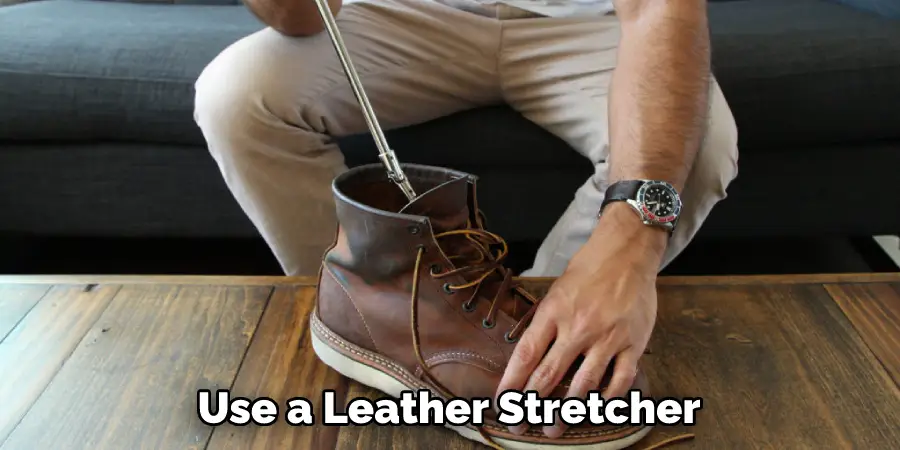
It’s best to leave the stretcher in your boot overnight for maximum effect. If you don’t have a leather stretcher, you can also use a wooden shoe stretcher to stretch the leather of your boots. Be sure to use only light pressure when stretching the boot, and stop if you feel resistance.
7. Apply Leather Softening Products:
There are leather softening products available in the market specifically designed to soften stiff leather. These products usually come in the form of creams, sprays, or oils that can be applied to the leather and help make it more supple. Follow the manufacturer’s instructions on how to use these products and apply them to the stiff areas of your boots.
Allow the product to sit for around 10 minutes before wiping off any excess. You may need to reapply a few times in order to fully soften your boots. After the application, your leather boots should feel noticeably softer and more comfortable!
8. Wear Them with Boot Stretchers:
Boot stretchers are similar to leather stretchers but are designed specifically for boots. They are inserted into the boots and expanded to stretch the leather in specific areas. Leave the boot stretchers in place for a few hours or overnight, and then remove them. This method can help stretch the stiff areas of the boots and make them more comfortable to wear.
Make sure to purchase boot stretchers of the appropriate size for your boots, and never force them into place as this can damage the leather. However, boot stretchers may not be effective for boots that are too small or have a permanent crease in the leather. In this case, it is best to replace the boots or take them to a cobbler for professional stretching.
9. Flex and Bend the Boots:
Flexing and bending the stiff areas of your boots can help soften the leather and make it more pliable. Use your hands to bend and flex the boots in different directions, paying extra attention to the stiff areas.
Be gentle and avoid applying excessive force that can damage the leather. If possible, wear the boots around the house and flex them as you move about to help soften them further. After regular wear, your leather boots should start to fit comfortably.
10. Be Patient and Wear Them Regularly:
Breaking in stiff leather boots takes time and patience. The more you wear them, the more the leather will mold to the shape of your feet and become more comfortable. Avoid wearing the boots for extended periods initially and gradually increase the duration as the leather becomes more supple.
Once the boots are broken in, it is important to continue wearing them regularly in order to keep them conditioned and comfortable. With proper care and maintenance, stiff leather boots can last for many years.
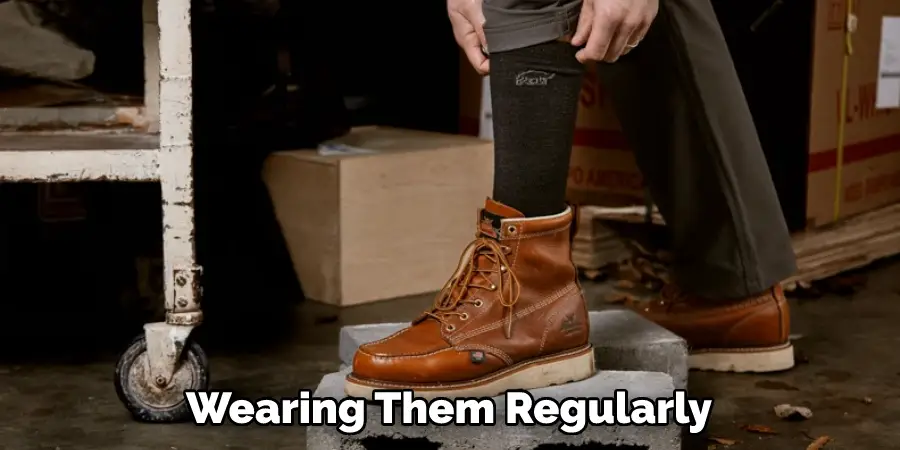
Conclusion
After following these steps and giving your leather boots the proper care and attention they need, you should end up with a broken-in pair of leather boots that will give you many years of comfortable wear!
Following these steps should have you looking dashing and feeling confident the next time you slip on those stiff leather boots! So don’t let your shoes hold you back: now that you know how to break in stiff leather boots, it’s time to go out there and put it into practice. Good luck!

